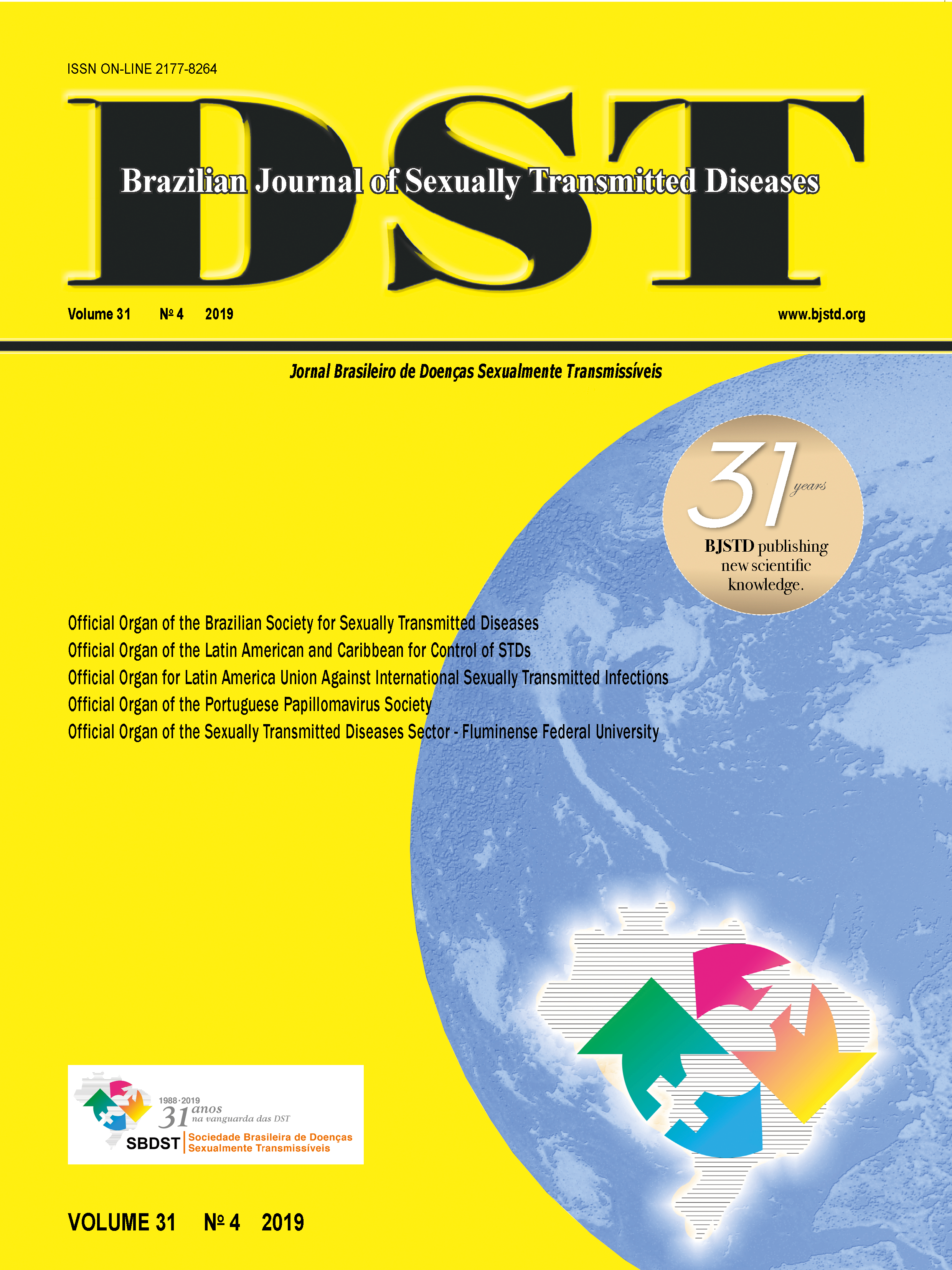Prevalence of ureaplasma urealyticum, mycoplasma hominis and human papillomavirus coinfection in people attending a sexually transmitted infections (STI)/HIV reference centre in Salvador, Bahia, Brazil
Keywords:
Ureaplasma urealyticum, Mycoplasma hominis, Human papilloma virus, reproductive tract infectionsAbstract
Introduction: Ureaplasma urealyticum and Mycoplasma hominis are frequently found at many women’s and men’s urogenital tract, and have been associated with non-gonococcal urethritis, cervicitis, infertility, chorioaminionitis and adverse pregnancy outcomes. Some studies show high prevalence of human papillomavirus (HPV) in patients with non-gonococcal urethritis, while also presenting high frequency of Ureaplasma urealyticum infection in women with cervicalcytology abnormalities and men with genital warts. Objectives: To evaluate the prevalence of Ureaplasma urealyticum, Mycoplasma hominis and HPV coinfection in people attending a sexually transmitted infections (STI)/HIV reference centre and to identify the risk factors associated. Methods: A cross-sectional study with patients aged >18 years, carried out for Ureaplasma urealyticum and Mycoplasma hominis from July 1st to December 31, 2015, in a STI/HIV reference centre from the State of Bahia, Brazil. Sociodemographic and clinical data were obtained from secondary data from patients’ charts and laboratory findings, and analyzed using SPSS 20.0. Pearson’s χ2 test or Fisher’s exact test was used to evaluate categorical variables. HPV clinical diagnosis was considered positive as the presence of genital warts. Results: In this study, 849 patients were included — 196 men and 653 women. Of the sample, 51.4% was diagnosed with at least one of the two bacteria. The prevalence of Mycoplasma hominis infection was higher in coinfection (16.7%) than in isolated infection (2.2%). The prevalence of Ureaplasma urealyticum isolated infection was 32.4%. A strong association was found between the presence of genital warts and Ureaplasma urealyticum infection, with an estimated risk of 1.230 (p=0.014). Conclusion: Our findings suggest the need for further investigation for Ureaplasma urealyticum infection in patients presenting genital warts on physical examination. In addition, in this context, greater attention should be given to women and pregnant women.












